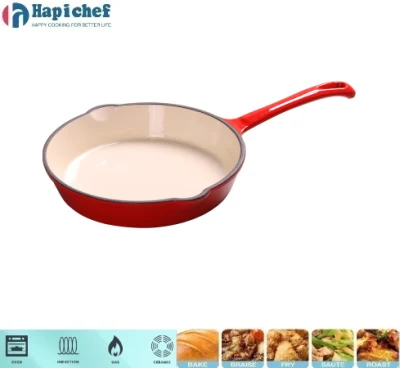Delicious Cast Iron Skillet Pizza Made in Your Oven at Home
The Art of Cast Iron Skillet Pizza A Perfect Oven Delight
When it comes to homemade pizza, there’s a secret weapon that every pizza lover should have in their kitchen a cast iron skillet. This unassuming yet versatile tool can help you create pizzas that rival those from your favorite pizzeria, and using it in the oven transforms the entire cooking experience. Let’s explore the advantages of using a cast iron skillet for pizza and how to master this cooking technique.
Why Choose a Cast Iron Skillet?
Cast iron skillets have been a staple in kitchens for generations. Their ability to retain and evenly distribute heat makes them ideal for various cooking methods, including frying, baking, and, of course, pizza making. When used in the oven, a cast iron skillet can reach high temperatures that help achieve that deliciously crispy crust we all crave.
One of the biggest benefits of using a cast iron skillet is its versatility. Not only does it work wonders for pizza, but it can also handle a variety of other dishes, from cornbread to frittatas. This multifunctionality makes it a worthy investment for any home cook.
Achieving the Perfect Crust
Creating the perfect pizza starts with the dough. Regardless of whether you opt for a store-bought option or make your dough from scratch, ensure that you allow it to rest and rise adequately. Proper rising allows for a lighter texture, which is crucial for achieving that crispy yet fluffy crust.
Preheating your cast iron skillet is essential for optimal results. Place it in the oven while it preheats to around 475°F (245°C). The skillet will absorb the heat, creating a beautiful crust as soon as the dough makes contact. When ready, carefully remove the hot skillet from the oven and lightly grease it with olive oil or butter to prevent sticking.
Building Your Pizza
cast iron skillet pizza oven

Now that your skillet is preheated, it’s time to assemble your pizza. Roll out your dough to fit the shape of the skillet, ensuring it extends slightly up the sides for a deep-dish effect, if that’s what you prefer. Once the dough is in the skillet, it's time to get creative with toppings.
Start with a layer of sauce whether it’s classic marinara, a spicy arrabbiata, or even pesto, the choice is yours. Spread it evenly but leave a bit of space around the edges for that crust. Next, generously sprinkle a blend of cheeses—mozzarella is a must for its meltiness, but adding provolone or parmesan can enhance flavor complexity.
Finally, the fun part toppings. From pepperoni and mushrooms to bell peppers and olives, the possibilities are endless. Just remember to balance flavors and textures. For a special touch, drizzle some olive oil or sprinkle fresh herbs like basil or oregano before popping the skillet back into the oven.
Baking to Perfection
Slide your cast iron skillet back into the oven and allow your pizza to bake for about 12-15 minutes. Keep an eye on it as the baking progresses—the cheese should bubble and begin to brown, while the edges of the crust turn golden and crispy.
Once it’s reached the desired level of doneness, carefully remove the skillet from the oven (it will be extremely hot!) and let it cool for a few minutes. This allows the cheese to set slightly, making slicing easier.
Enjoying Your Creation
Finally, it’s time to dig in! Use a spatula to slice out generous portions of your cast iron skillet pizza. The combination of the crispy crust, melted cheese, and savory toppings creates a delightful experience that makes every bite worth it.
Using a cast iron skillet for pizza is not just a cooking method; it’s a culinary adventure that opens the door to delicious creations in your own kitchen. Whether you’re hosting a pizza night with friends or enjoying a quiet dinner at home, this cast iron technique is sure to impress. Experiment with flavors, toppings, and styles, and take pride in serving up homemade pizzas that reflect your personal taste. Happy pizza making!
-
Why Every Kitchen Needs a Casserole Cast Iron DishNewsJun.24,2025
-
Experience the Tradition and Quality of Cast Iron CookwareNewsJun.24,2025
-
Double Sided Cast Iron Grill PanNewsJun.24,2025
-
Cast Iron Dutch Ovens You’ll Actually UseNewsJun.24,2025
-
Buy Cast Iron Griddle for Everyday CookingNewsJun.24,2025
-
Barbecue Iron Grill Cooking PowerNewsJun.24,2025
-
Standard Product Lines from Cast Iron Cookware SuppliersNewsJun.11,2025
